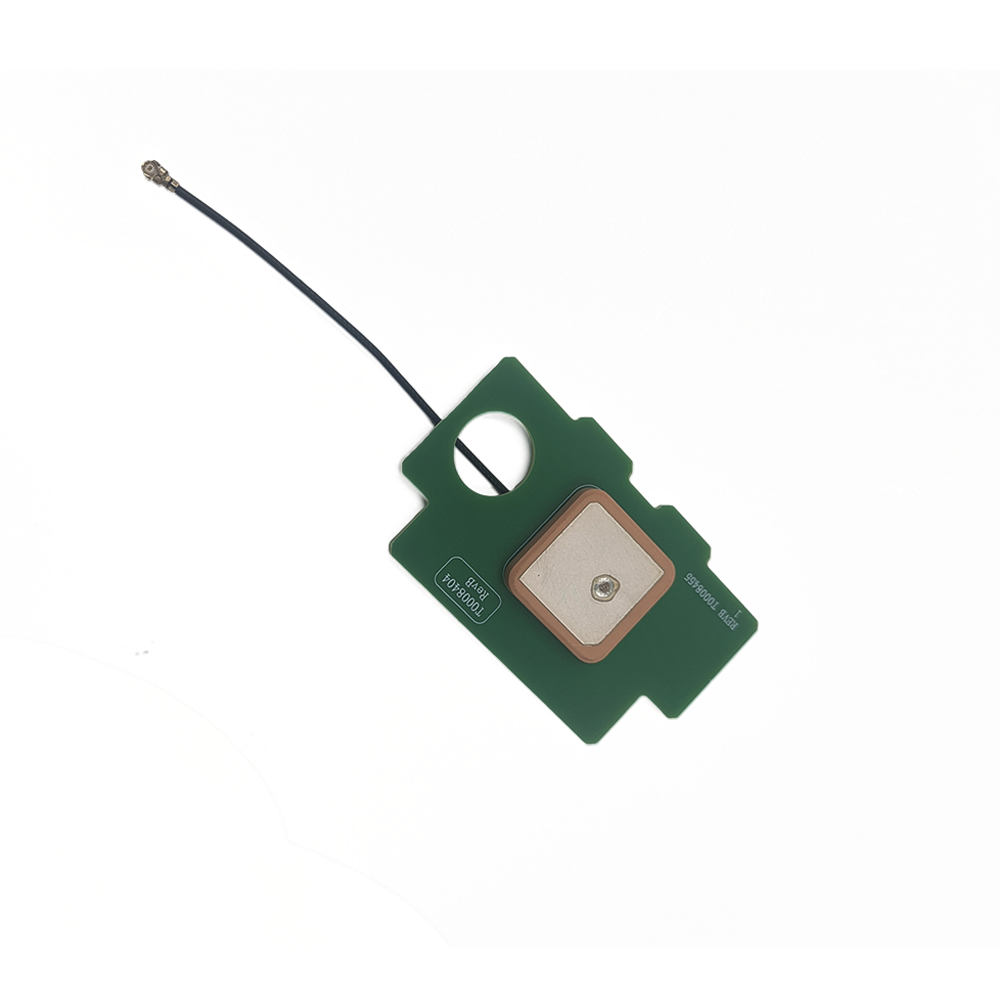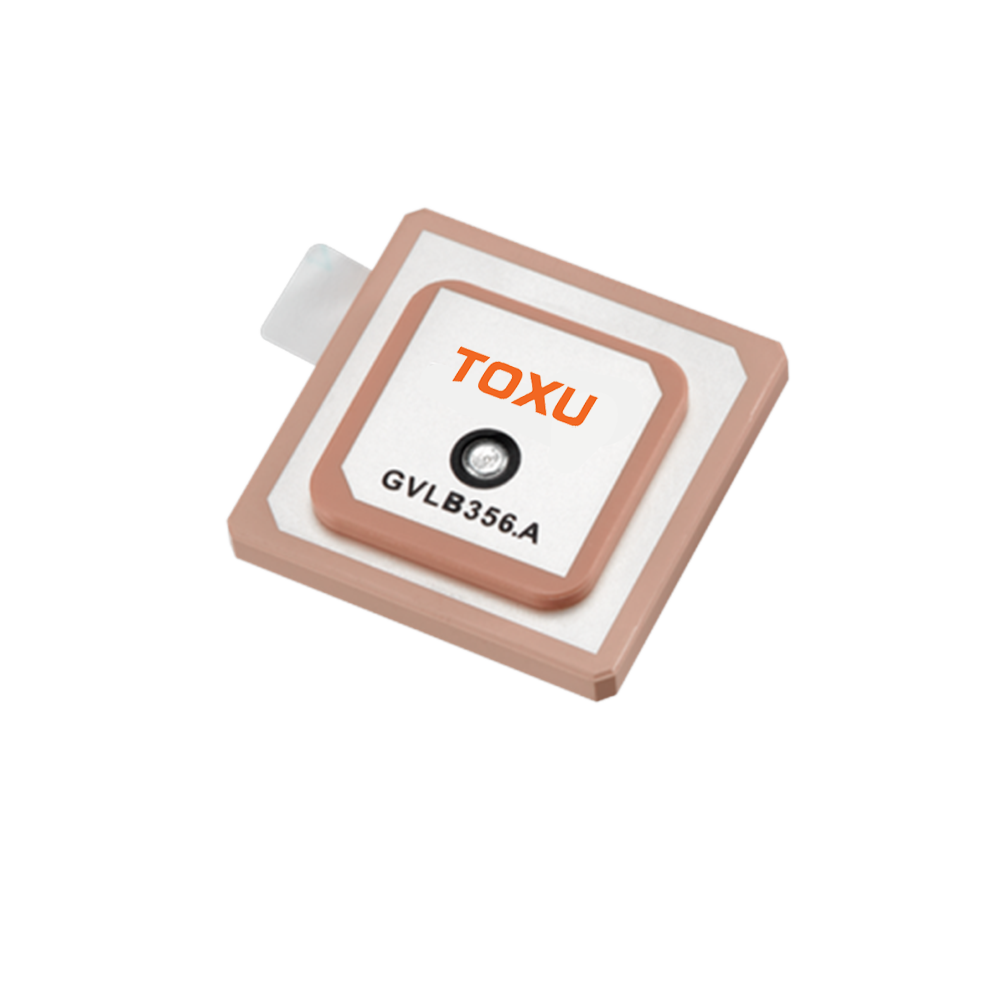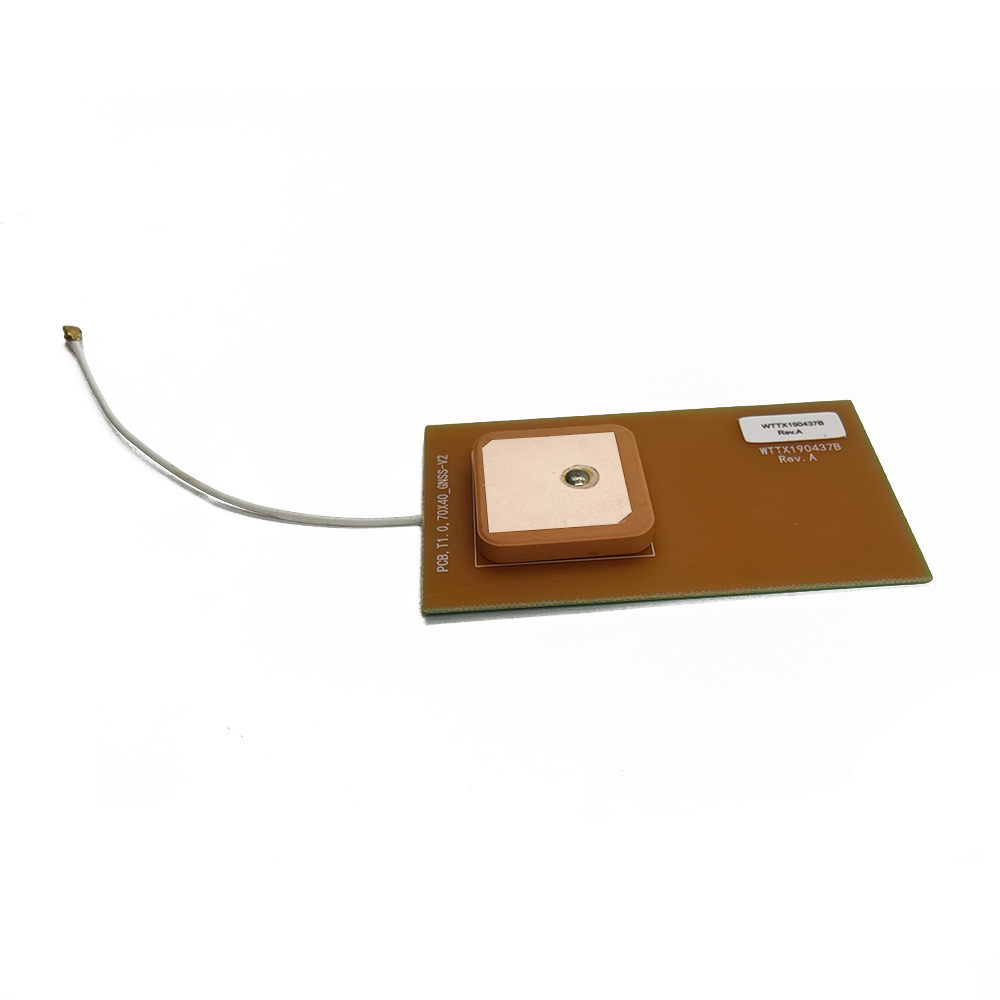Overview
1.1 Historical Context and Evolution
The development of GPS ceramic antennas began in the late 1990s, driven by the need for miniaturization in consumer electronics. Traditional GPS antennas, such as helical or quadrifilar helix designs, were bulky and unsuitable for compact devices. Ceramic patch antennas emerged as a solution, utilizing high-dielectric-constant materials to reduce size without sacrificing performance.
Early models supported only the GPS L1 band (1575.42 MHz), but advancements in multi-band technology have enabled coverage of additional frequencies like L2 (1227.6 MHz), L5 (1176.45 MHz), and even modernized signals like L6 (1278.75 MHz). This evolution has expanded their use in high-precision applications such as surveying, autonomous vehicles, and RTK (Real-Time Kinematic) positioning.
1.2 Market Drivers and Applications
The global demand for built-in GPS ceramic antennas is fueled by:
Miniaturization Trends: The proliferation of wearables (e.g., smartwatches, fitness trackers) and compact IoT devices.
High-Precision Navigation: Automotive (ADAS), drones, and agricultural machinery require centimeter-level accuracy.
Multi-GNSS Compatibility: Support for GPS, GLONASS, Galileo, and BeiDou constellations enhances global coverage.
Cost Efficiency: Ceramic antennas are cheaper to mass-produce than active alternatives like chip antennas with integrated amplifiers.
Key applications include:
Consumer Electronics: Smartphones, tablets, and laptops.
Automotive: Telematics, in-car navigation, and V2X (Vehicle-to-Everything) communication.
Industrial: Asset tracking, logistics, and smart agriculture.
Aerospace: Unmanned aerial vehicles (UAVs) and satellite communication.
Design and Construction
Built-in GPS ceramic antennas are engineered through a combination of material science, electromagnetic design, and manufacturing precision.
2.1 Core Components
Ceramic Dielectric Substrate:
Made from high-dielectric-constant materials (εr ≈ 9–15), such as ZTA (Zirconia-Titania-Alumina) composites.
The substrate acts as a resonator, amplifying the 1575.42 MHz signal through electromagnetic resonance.
Example: Kyocera’s M830120 uses IMD (Isolated Magnetic Dipole) technology to achieve multi-band performance in an 8.00 × 3.00 × 1.33 mm package.
Radiating Patch:
A rectangular or circular metallic layer (typically silver) deposited on the ceramic surface.
The patch’s dimensions determine the antenna’s resonant frequency. For GPS L1, a 18×18 mm patch is common, but smaller designs (e.g., 8×3 mm) use higher-εr materials.
Ground Plane:
The PCB beneath the antenna serves as the ground plane, reflecting signals to form a directional radiation pattern.
Critical for impedance matching (typically 50 Ω) and minimizing back-lobe radiation.
Feeding Structure:
Passive antennas use a single-feed or dual-feed design to excite the patch.
Active antennas integrate a low-noise amplifier (LNA) to boost weak signals (e.g., -165 dBm in urban canyons).
2.2 Manufacturing Process
Ceramic Sintering:
Ceramic powder is pressed into molds and fired at high temperatures (1200–1500°C) to form a dense substrate.
Metallization:
Silver or copper layers are screen-printed or electroplated onto the ceramic surface.
Tuning and Testing:
The antenna’s resonant frequency is adjusted by trimming the patch size or modifying the silver layer’s geometry.
VSWR (Voltage Standing Wave Ratio) and gain are measured to ensure compliance with specifications (e.g., VSWR ≤ 2.0).
2.3 Key Design Considerations
Frequency Bands: Multi-band antennas require stacked patches or advanced matching networks.
Environmental Robustness: Must withstand temperatures from -40°C to +85°C and humidity up to 95%.
Mounting Options: SMT (Surface-Mount Technology) for automated assembly, or thru-hole for mechanical stability.
RoHS Compliance: Lead-free soldering and materials to meet environmental regulations.
Working Principles
4.1 Advantages
Miniaturization:
Ceramic antennas occupy <10% of the space of traditional helical antennas.
High Performance:
Gain and efficiency (75–85%) outperform PCB antennas in weak-signal scenarios.
Cost-Effectiveness:
Mass production costs are lower than active chip antennas.
Multi-Band Support:
Modern designs cover L1/L2/L5/L6 for high-precision applications.
4.2 Challenges
Design Complexity:
Multi-band antennas require precise tuning and stacking, increasing engineering effort.
Environmental Sensitivity:
Performance varies with PCB layout, enclosure materials, and user hand positioning.
Limited Range:
Passive antennas struggle in deep indoors or dense foliage compared to active alternatives.
Thermal Expansion:
Ceramic and PCB materials expand at different rates, risking detuning over temperature cycles.
Advantages and Challenges
-
4.1 Advantages
Miniaturization:
Ceramic antennas occupy <10% of the space of traditional helical antennas.
High Performance:
Gain and efficiency (75–85%) outperform PCB antennas in weak-signal scenarios.
Cost-Effectiveness:
Mass production costs are lower than active chip antennas.
Multi-Band Support:
Modern designs cover L1/L2/L5/L6 for high-precision applications.
4.2 Challenges
Design Complexity:
Multi-band antennas require precise tuning and stacking, increasing engineering effort.
Environmental Sensitivity:
Performance varies with PCB layout, enclosure materials, and user hand positioning.
Limited Range:
Passive antennas struggle in deep indoors or dense foliage compared to active alternatives.
Thermal Expansion:
Ceramic and PCB materials expand at different rates, risking detuning over temperature cycles.
Applications and Future Trends
-
5.1 Current Applications
Smartphones: Single-band L1 antennas for basic navigation.
Automotive: Multi-band antennas for ADAS and V2X communication.
Drones: High-gain antennas for stable flight control.
Asset Tracking: Low-power antennas for logistics and livestock monitoring.
5.2 Future Trends
Material Innovations:
Development of ultra-high-εr ceramics (εr > 20) for sub-5 mm antennas.
Sensor Fusion:
Integration with IMUs (Inertial Measurement Units) and Wi-Fi for hybrid positioning.
5G and GNSS Convergence:
Co-design of antennas for joint 5G NR and GPS operation.
Autonomous Vehicles:
Centimeter-level RTK antennas for self-driving cars.
Flexible Ceramics:
Printable ceramic inks for wearable and curved-surface applications.
Conclusion
Built-in GPS ceramic antennas represent a critical enabler of modern navigation and location-based services. Their combination of miniaturization, multi-band support, and cost efficiency has made them indispensable in consumer electronics, automotive systems, and industrial IoT. While challenges like environmental sensitivity and design complexity persist, ongoing advancements in materials science and sensor fusion promise to unlock new frontiers in precision, reliability, and application diversity. As the demand for high-accuracy positioning grows across industries, ceramic antennas will remain at the forefront of GNSS technology innovation.




































































 Language
Language
 En
En Cn
Cn Korean
Korean

 Home >
Home > 








 18665803017 (Macro)
18665803017 (Macro)













